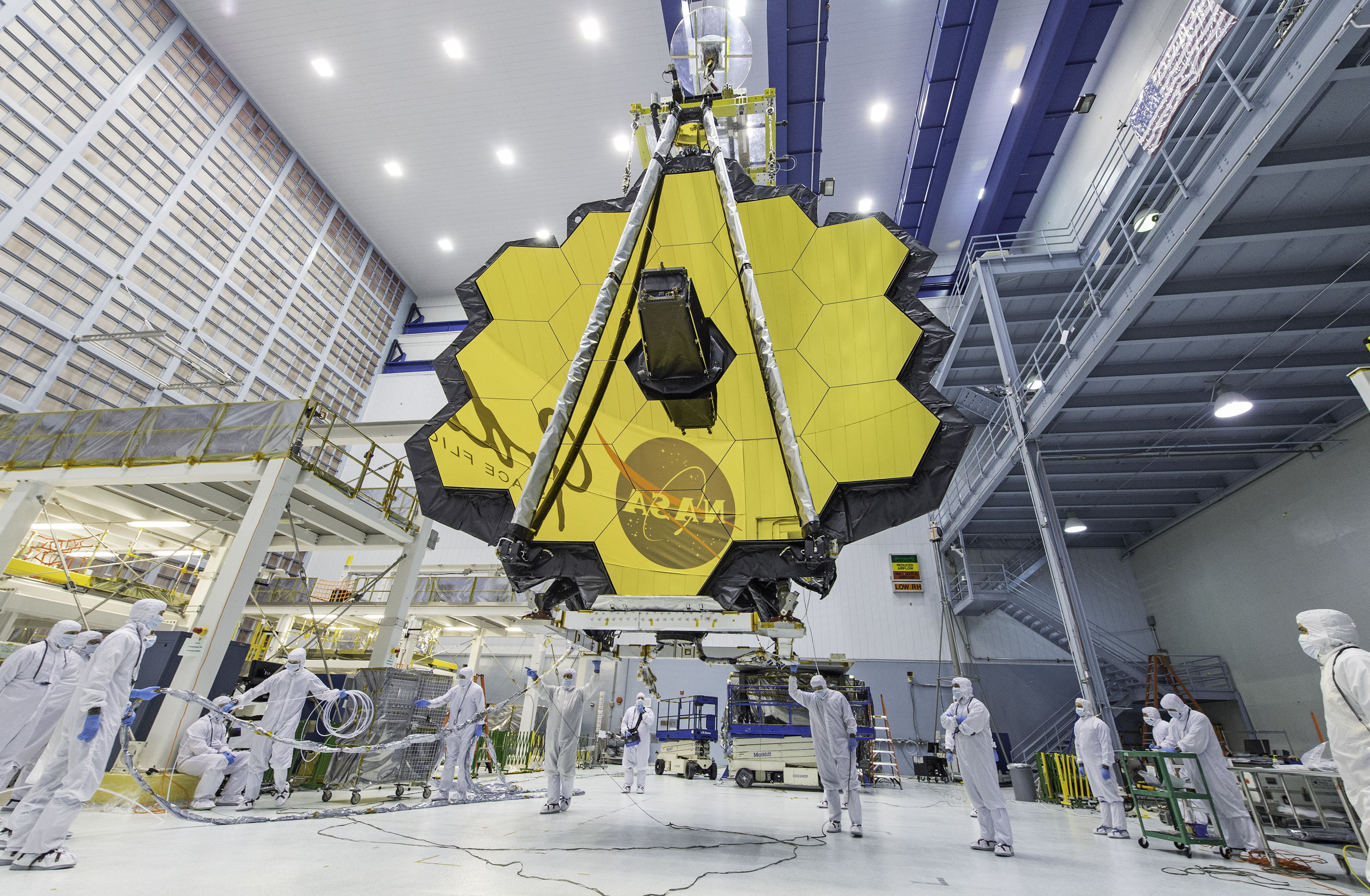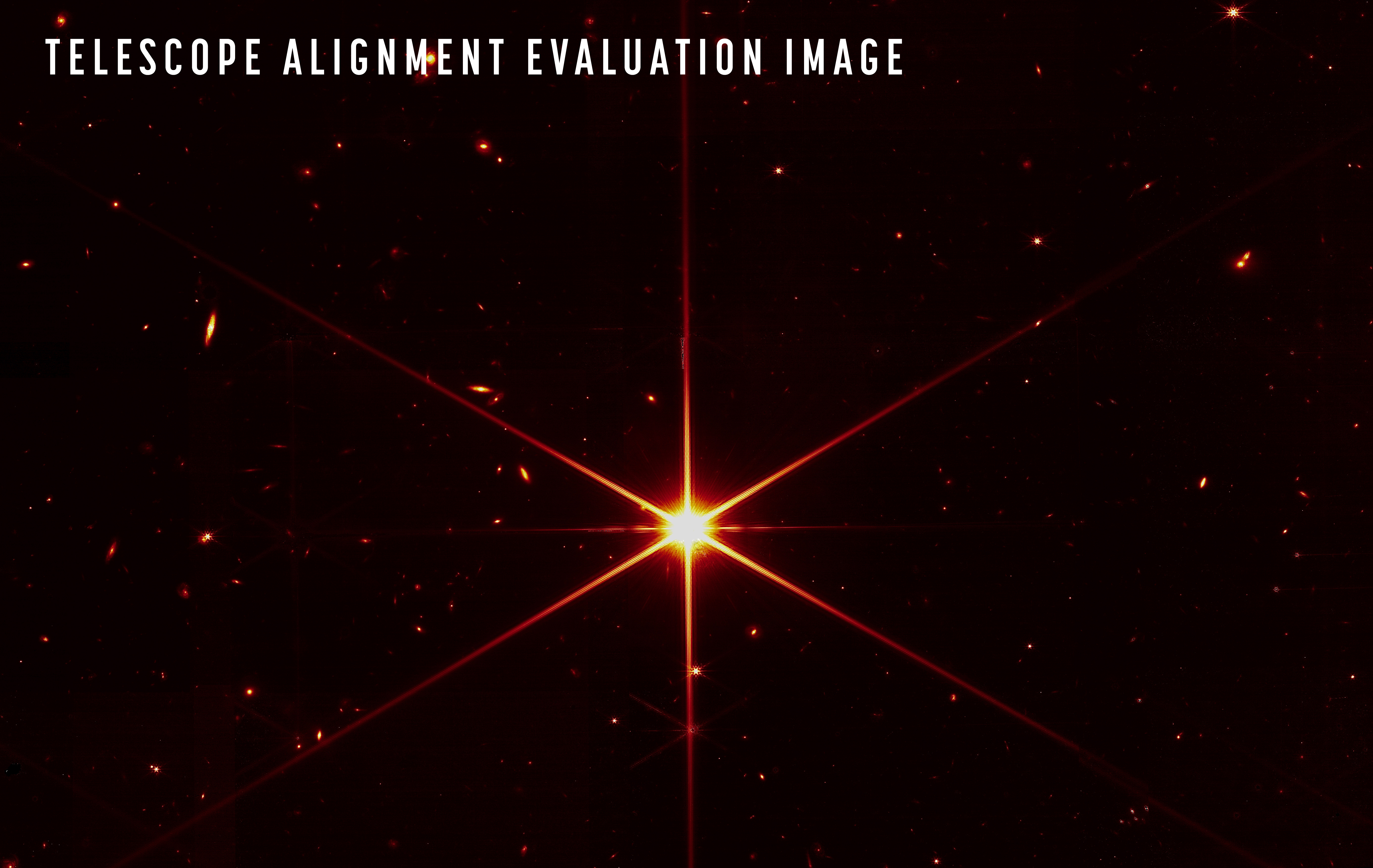Welcome to Tesla Motors Club
Discuss Tesla's Model S, Model 3, Model X, Model Y, Cybertruck, Roadster and More.
Register
Install the app
How to install the app on iOS
You can install our site as a web app on your iOS device by utilizing the Add to Home Screen feature in Safari. Please see this thread for more details on this.
Note: This feature may not be available in some browsers.
-
Want to remove ads? Register an account and login to see fewer ads, and become a Supporting Member to remove almost all ads.
You are using an out of date browser. It may not display this or other websites correctly.
You should upgrade or use an alternative browser.
You should upgrade or use an alternative browser.

NASA to Discuss Progress as Webb Telescope’s Mirrors Align - NASA
NASA will hold a virtual media briefing at noon EDT Wednesday, March 16, to provide an update on the James Webb Space Telescope’s mirror alignment. The
Young
Member

NASA to Discuss Progress as Webb Telescope’s Mirrors Align - NASA
NASA will hold a virtual media briefing at noon EDT Wednesday, March 16, to provide an update on the James Webb Space Telescope’s mirror alignment. Thewww.nasa.gov

NASA’s Webb Reaches Alignment Milestone, Optics Working Successfully - NASA
Lee esta nota de prensa en español aquí.
First fully aligned image!
The new photo (photos?) released 3/16 or 3/17 is touted as demonstrating the various lenses are aligning as per plan to create the sharp visual image desired.
I admit that artistically I see a beautiful picture of a star, but don’t those long rays emanating from it indicate asterism (I think I’m recalling the correct term) that demonstrates lenticular error, akin to coma?
Also: check out the near-twin star on the left-most side of the picture. It’s a six-pointed beauty, just the same as a child would draw! (errr…me, too).
Here’s a typical link to the photograph: New James Webb Space Telescope photo showcases single star in key mission milestone
I admit that artistically I see a beautiful picture of a star, but don’t those long rays emanating from it indicate asterism (I think I’m recalling the correct term) that demonstrates lenticular error, akin to coma?
Also: check out the near-twin star on the left-most side of the picture. It’s a six-pointed beauty, just the same as a child would draw! (errr…me, too).
Here’s a typical link to the photograph: New James Webb Space Telescope photo showcases single star in key mission milestone
I wondered about the flare too.The new photo (photos?) released 3/16 or 3/17 is touted as demonstrating the various lenses are aligning as per plan to create the sharp visual image desired.
I admit that artistically I see a beautiful picture of a star, but don’t those long rays emanating from it indicate asterism (I think I’m recalling the correct term) that demonstrates lenticular error, akin to coma?
Also: check out the near-twin star on the left-most side of the picture. It’s a six-pointed beauty, just the same as a child would draw! (errr…me, too).
Here’s a typical link to the photograph: New James Webb Space Telescope photo showcases single star in key mission milestone
I mourn for my crumbling knowledge of refractive errors and how to correct them but put another way, a prime reason for throwing telescopes out to space is to bypass just that flare that is caused by atmospheric disturbances.
Just had a thought: perhaps that alignment star’s output is too bright for sensors attempting to look at cross sections of flea hairs from 99 billion light years away. That the neighboring galaxies &c in the photo do not suffer such asterism might corroborate this?
Young
Member
Just had a thought: perhaps that alignment star’s output is too bright for sensors attempting to look at cross sections of flea hairs from 99 billion light years away. That the neighboring galaxies &c in the photo do not suffer such asterism might corroborate this?
These spikes around bright objects are there due to the shape of finite size "aperture". When light pass by objects, part of it diffracts. Circular apertures create circular diffraction patterns overlayed to each bright points. In this case, dominant pattern is probably from the shape of the individual hexagonal primary mirrors.
favo
P3D+ owner
Someone asked about it on the live stream, and that's basically what they said (I am not an optical engineer). They also mentioned the support struts for the secondary mirror as a contributing factor. It was also stated that they had achieved "diffraction-limited" focus, so can't really do any better due to physics.These spikes around bright objects are there due to the shape of finite size "aperture". When light pass by objects, part of it diffracts. Circular apertures create circular diffraction patterns overlayed to each bright points. In this case, dominant pattern is probably from the shape of the individual hexagonal primary mirrors.
Ah! Brings back memories, yes: circular apertures and circular diffusion patterns; SLR camera leafs create hexagons and hexagonal patterns. So that must be much of the answer…..it may be analogous but it seems to me not 100% identical here. The mirror is made of hexagons but that doesn’t mean the aperture also is.
Electroman
Well-Known Member
This is the picture and which star on the left most side are you referring to?Also: check out the near-twin star on the left-most side of the picture. It’s a six-pointed beauty, just the same as a child would draw! (errr…me, too).
Go directly along the main star’s 0-axis - the minor line dead-horizontal - leftwards. Take a close-up look at the nigh-double that that line, extended, would pass through. See the “cut out” version of a six-pointed “star”? As Gus said, “It’s just like the ones on my bedroom ceiling!”.
I found two similar ones, not quite so sharp.
I found two similar ones, not quite so sharp.
Last edited:
I love how multiple galaxies are visible in that photo. Imagine what the JWST will be able to see when it really gets to work! It could blow away the Hubble Deep Field view.

This headline startled me but the damage apparently was minimal and it should not impair the operation of the telescope.
James Webb Space Telescope struck by micrometeoroid
James Webb Space Telescope struck by micrometeoroid
While it’s normal for spacecraft to experience impact events of this nature, NASA noted that this particular micrometeoroid, which hit the telescope between May 25 and May 27, was larger than any it had forecast when modeling such events prior to the mission’s launch in December 2021.
Analysis of the damage to the mirror segment is ongoing, but NASA said the early indications are that the telescope is continuing to perform “at a level that exceeds all mission requirements despite a marginally detectable effect in the data.”
Commenting on the strike, Paul Geithner, technical deputy project manager at NASA’s Goddard Space Flight Center, said: “We always knew that Webb would have to weather the space environment, which includes harsh ultraviolet light and charged particles from the sun, cosmic rays from exotic sources in the galaxy, and occasional strikes by micrometeoroids within our solar system. We designed and built Webb with performance margin — optical, thermal, electrical, mechanical — to ensure it can perform its ambitious science mission even after many years in space.”
Ben W
Chess Grandmaster (Supervised)
Was it Roadster-shaped?
While it’s normal for spacecraft to experience impact events of this nature, NASA noted that this particular micrometeoroid, which hit the telescope between May 25 and May 27, was larger than any it had forecast when modeling such events prior to the mission’s launch in December 2021.
Similar threads
- Replies
- 12
- Views
- 2K
- Replies
- 23
- Views
- 2K
- Replies
- 10
- Views
- 3K
- Article
- Replies
- 18
- Views
- 4K


